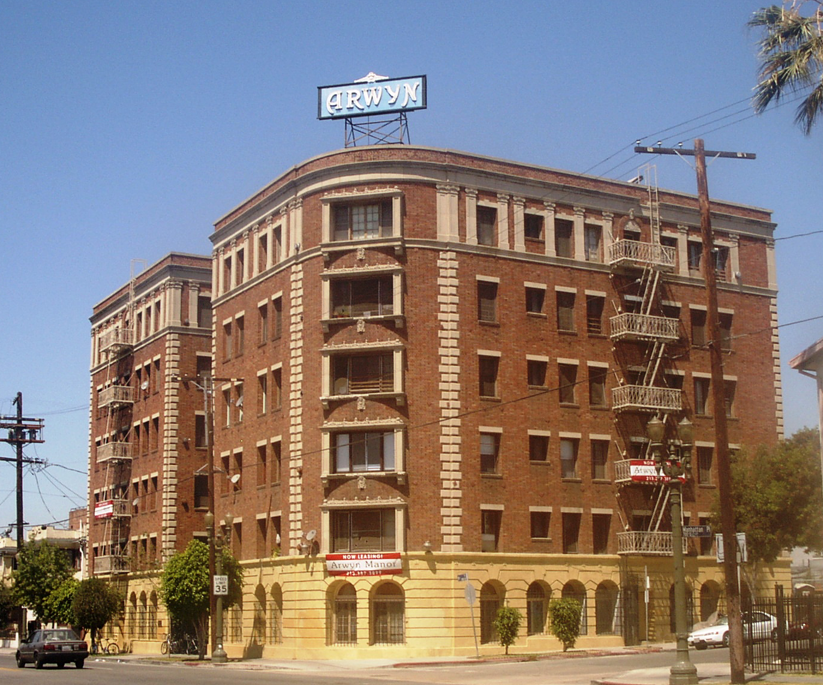

Arwyn Manor, Los Angeles Historic Cultural Monument #878
Built: 1928 Declared: 07/17/2007
This brick and steel frame apartment building is an excellent intact example of the style that was built in Los Angeles from before World War I until the early 1930s. The original owner, David Haves, appears to have been a local developer. Haves was to retain ownership for a number of years. Ben Kagan is listed as the contractor on the building permit, with C. Waldo Powers as the architect. The Arwyn Manor apartment building displays a high degree of integrity in its design, and is a fine, well-maintained building that gives a solid reference to its time and place. The neon roof sign is of particular importance. It was installed shortly after the completion of the building by Electrical Products Corporation. The sign, that glows blue at night, was re-lit through the Los Angeles Department of Cultural Affairs LUMENS Project several years ago.
The building has undergone Section 88 seismic retrofit. The work was done in such a manner that it retained the architectural integrity of the building. C. W. Powers, who was both an architect and an engineer, was the designer of many of the large apartment buildings constructed during the building boom of the 1920s that was a direct result of the sudden population growth in Los Angeles after World War I. Powers was only in his 20s, but he was getting many of the large commissions of that period. His name was frequently cited in the Southwest Builder and Contractor for his work. He was born in Los Angeles in 1900 to a Swedish Father and a native California Mother who was also of Swedish descent. His designs went through a variety of styles from Beaux Arts to Zigzag Moderne. The Arwyn Manor is one of his largest apartment projects. The building is classic Italian Renaissance in design, yet it is built with a steel frame, which is unusual for apartment buildings of the period. The building shows Power’s abilities in both its design and its execution. It was advertised as a most modern building and attracted long term tenants who were both upwardly mobile and established. One example was Walker, president of the California Drilling Company, who lived there for many years before his death in 1949. The building has not only retained its original design, but has been a very visible landmark in its neighborhood its construction.